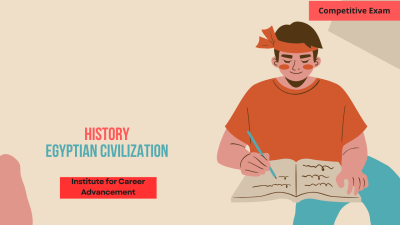Egyptian Civilization
Egyptian Civilization refers to one of the world's oldest and most influential ancient cultures, which thrived along the Nile River for over 3,000 years. Known for its monumental achievements, the civilization is famous for the construction of the pyramids, the development of a complex religious system, the use of hieroglyphic writing, and advances in medicine, mathematics, and architecture. The Pharaohs, the kings of Egypt, played a central role in governance and religious practices, overseeing monumental projects like the Great Pyramids of Giza and the Sphinx. Egyptian society was deeply intertwined with religion, and their legacy continues to influence art, architecture, and culture today. মিশরীয় সভ্যতা বিশ্বের প্রাচীনতম এবং সবচেয়ে প্রভাবশালী প্রাচীন সংস্কৃতিকে বোঝায়, যা 3,000 বছরেরও বেশি সময় ধরে নীল নদের তীরে সমৃদ্ধ হয়েছিল। তার স্মরণীয় কৃতিত্বের জন্য পরিচিত, সভ্যতাটি পিরামিড নির্মাণ, একটি জটিল ধর্মীয় ব্যবস্থার বিকাশ, হায়ারোগ্লিফিক লেখার ব্যবহার এবং চিকিৎসা, গণিত এবং স্থাপত্যের অগ্রগতির জন্য বিখ্যাত। মিশরের রাজা ফারাওরা শাসন ও ধর্মীয় অনুশীলনে কেন্দ্রীয় ভূমিকা পালন করেছিলেন, গিজার গ্রেট পিরামিড এবং স্ফিংক্সের মতো স্মৃতিসৌধ প্রকল্পগুলির তদারকি করেছিলেন। মিশরীয় সমাজ ধর্মের সঙ্গে গভীরভাবে জড়িত ছিল এবং তাদের উত্তরাধিকার আজও শিল্প, স্থাপত্য এবং সংস্কৃতিকে প্রভাবিত করে চলেছে।
English
Last updated
Sat, 01-Mar-2025



















